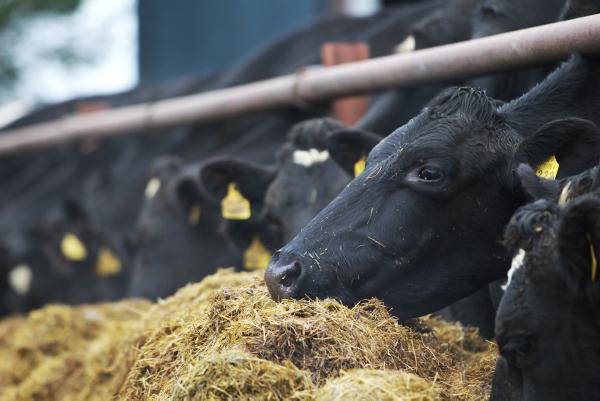Where excessive damage cannot be avoided, even after employing all the tricks of grass utilisation then housing is the right thing to do. Cow accommodation was built for times like this, so you may as well make use of it if you have it.
But there will be consequences to housing – more silage will be fed, more meal will have to be fed and less milk solids will be produced, both now and into the future as a result of extra silage being fed as protein suffers. Incidence of mastitis will probably increase also. So the objective must be to get back out to grass as soon as possible.
That said, a good few farmers are still out grazing using on/off grazing techniques and sticking to the three-hour grazing breaks. I was in Galway today visiting two farms and both had cows out grazing, albeit for a short period.
Feed space is critically important
With no imminent change in the forecast it looks as though this weather will last for the rest of the week. Farmers with large herds are really struggling as trampling around gaps is magnified with more cows.
Some farmers who are short on feed space and/or cubicles on the milking block have no alternative but to turn cows out to grass. Consider letting out half of the herd at a time and rotate which half are to get silage so there is grass in the cow’s diet every 24 hours.
When it comes to managing milking cows inside, there are a number of areas farmers need to get right. Feed space is critically important. Cows should get 30cm of feed head space per cow when silage is being fed ad lib and 60cm if concentrates are being fed.
Ad lib silage means there is always silage in front of the cows and the barrier is never empty.
Keep an eye on conditions
Scrape down cubicles twice a day and lime them. If using hydrated lime, one fistful per cubicle once a day will suffice, but if using ordinary ground limestone they will need more of it and for it to be topped up twice a day.
On meal feeding, if cows are inside on mediocre silage they will need extra meal. The most amount of meal most farmers are feeding is 6kg per cow per day.
Finally, keep an eye on conditions. The biggest mistake to be made now is to be slow to react to changes in the weather. While the forecast isn’t great, your farm could be drier than you think so get out there and walk the driest paddocks and make a decision then.
Read more
Listen: ‘butter no longer a villain’ – Ornua export boss
Milk league: January bonus pushes LacPatrick to the top
Where excessive damage cannot be avoided, even after employing all the tricks of grass utilisation then housing is the right thing to do. Cow accommodation was built for times like this, so you may as well make use of it if you have it.
But there will be consequences to housing – more silage will be fed, more meal will have to be fed and less milk solids will be produced, both now and into the future as a result of extra silage being fed as protein suffers. Incidence of mastitis will probably increase also. So the objective must be to get back out to grass as soon as possible.
That said, a good few farmers are still out grazing using on/off grazing techniques and sticking to the three-hour grazing breaks. I was in Galway today visiting two farms and both had cows out grazing, albeit for a short period.
Feed space is critically important
With no imminent change in the forecast it looks as though this weather will last for the rest of the week. Farmers with large herds are really struggling as trampling around gaps is magnified with more cows.
Some farmers who are short on feed space and/or cubicles on the milking block have no alternative but to turn cows out to grass. Consider letting out half of the herd at a time and rotate which half are to get silage so there is grass in the cow’s diet every 24 hours.
When it comes to managing milking cows inside, there are a number of areas farmers need to get right. Feed space is critically important. Cows should get 30cm of feed head space per cow when silage is being fed ad lib and 60cm if concentrates are being fed.
Ad lib silage means there is always silage in front of the cows and the barrier is never empty.
Keep an eye on conditions
Scrape down cubicles twice a day and lime them. If using hydrated lime, one fistful per cubicle once a day will suffice, but if using ordinary ground limestone they will need more of it and for it to be topped up twice a day.
On meal feeding, if cows are inside on mediocre silage they will need extra meal. The most amount of meal most farmers are feeding is 6kg per cow per day.
Finally, keep an eye on conditions. The biggest mistake to be made now is to be slow to react to changes in the weather. While the forecast isn’t great, your farm could be drier than you think so get out there and walk the driest paddocks and make a decision then.
Read more
Listen: ‘butter no longer a villain’ – Ornua export boss
Milk league: January bonus pushes LacPatrick to the top






 This is a subscriber-only article
This is a subscriber-only article









SHARING OPTIONS: